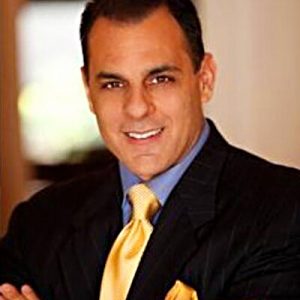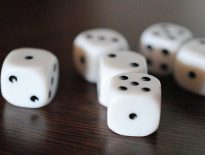Mark Minervini – Stocks Around The Clock

Today’s post is a profile of Guru investor Mark Minervini, who appears in Jack Schwager’s book Stock Market Wizards. His chapter is called Stocks Around The Clock.
Contents
Mark Minervini
Minervini appears in Jack Schwager’s book Stock Market Wizards.
- His chapter is called Stocks Around The Clock.
I think it’s fair to say that Mark Minervini wasn’t Jack Schwager’s favourite interview.
- He describes Minervini as “a bit cocky – he feels he is better than most of his peers”.
My goal is to be the best trader in the world. If you’re the best, you don’t have to worry about money.
He also found it difficult to get him to talk about anything other than the stock market.
I had the distinct impression that his responses were being guided by the hand of an unseen publicist.
Early days
Minervini was a high school dropout who worked as a drummer.
He played for several bands, cut a record, appeared on an MTV video, worked as a studio musician, and owned his own studio.
He had been interested in the markets since the early 1980s and eventually sold his studio to get a stake together.
When I first started trading stocks, I was buying low-priced stocks that were making new lows. I was also taking tips from brokers.
He lost everything and spent the next decade on research and self-education.
You have to ignore what anybody else thinks.
Losing all of your money is one of the best things that can happen to a beginning trader. Because it teaches you respect for the market.
It is much better to learn the lesson that you can lose everything when you don’t have that much money.
In 1994 he combined his various strategies into a single portfolio that would become his track record.
I never stopped believing that there were great trading opportunities available every day. It was just a matter of my figuring out how to identify them.
My mistake had been surrendering the decision-making responsibility to someone else.
My results were transformed when I understood that what counts isn’t how often you’re right, but how much you profit on your winning trades versus how much you lose on your losing trades.
On average, I’m only profitable about 50 percent of the time.
Performance
In the five and a half years to Schwager’s interview in 1999 (close to a market peak, remember), Minervini averaged 220% pa compound.
- In 1997 he won the U.S. Investing Championship with a gain of 155%.
- His worst year was 128%, and he had only one down quarter (less than 1% down).
In 2000 he launched a hedge fund called Quantech.
- He also has a research firm which sells proprietary signals.
This “money management by day, research by night” approach is what made Schwager call his chapter “Stocks around the Clock”.
Trading approach
Expose your portfolio to the best stocks the market has to offer and cut your losses very quickly when you’re wrong.
Minervini’s starting point is:
A quantitative screen based on the characteristics of the stocks that witnessed the largest and most rapid price advances during the past century.
A good book on this concept is Superperformance Stocks by Richard Love.
A good fill is a death-blow. Stocks that are ready to blast off are usually very difficult to buy without pushing the market higher.
Good stocks
Minervini describes some characteristics of good stocks:
They tend to be less familiar names – more than 80% are less than ten years old.
I avoid low-priced stocks (under $12) and most stocks I buy are $20 or higher.
One thing that would surprise most people is that these stocks typically trade at above-average price/earnings (P/E) ratios, even before they become big winners.
Personality
The market is not a science. Science may help increase the probabilities, but to excel you need to master the art of trading.
Most people, even if they have a winning strategy, will not follow it because they lack discipline. Everyone knows how to lose weight. So why are most people overweight?
There are a thousand ways to get an edge. Developing your own strategy is what is important.
Concentrate on mastering one style that suits your personality, which is a lifetime process.
I think almost anyone can be net profitable in the stock market given enough time and effort, but to be a great trader, you must have a passion for it.
Losses
Containing your losses is 90 percent of the battle, regardless of the strategy.
I think most people overemphasize stock selection. [They] spend too much time trying to discover great entry strategies and not enough time on money management.
Assume you bought three stocks a day at random from the top two hundred relative strength stocks, and you sold with a 10% stop-loss. You would make money.
You are exposing yourself to a group of stocks that is likely to contain some big potential winners while at the same time you are cutting your losses.
After I had been trading for several years following my initial wipeout in the markets, I decided to do an analysis of all my trades. If I had capped all my losses at 10%, I would have increased my profits by 70%.
I will use much wider stops on long-term trades than short-term trades. I will also use much wider stops when I think the market is in the early stages of a bull move than if I think the market is overdone and due for a correction.
I have no problem putting on the same trade many times. Many times I would get stopped out of a stock, then look at it a few months later and see that it had doubled or tripled.
I realized that I needed to develop a plan to get back on board after I was stopped out.
I don’t impose any artificial restrictions on my upside potential.
Paper trading
I think paper trading is the worst thing you can do.
If you are a beginner, trade with an amount of money that is small enough so that you can afford to lose it, but large enough so that you will feel the pain if you do. Otherwise, you’re fooling yourself.
You’re going to make totally different decisions because you’re not used to being subjected to the emotional pressure. It’s like shadow-boxing and then getting in the ring with a professional.
Entries
Schwager calls Minervini’s entry conditions a “price action sandwich”:
The initial condition is based on the long-term price action.
Then there are confirming fundamental conditions, which may be overridden in certain circumstances.
Finally, determining the entry point is based strictly on the [short-term] price action.
Fundamentals
I use both fundamental and technical analysis, roughly 50/50.
I would never bet on my fundamental ideas without some confirming price action, but I might consider buying a stock with apparent negative fundamentals if its relative price performance is in the top 2% of the market.
The price action may be discounting a potential change in the fundamentals. This often occurs in turnarounds or companies with a new technology.
Charts
I run computer screens on 10K stocks to narrow the list to 800. I quickly review these charts to identify 30 to 40 stocks that look interesting. I then review the fundamentals for these stocks.
I always look at a five-year, one-year, and intraday chart.
I don’t use conventional chart patterns. I look for more complex variations. There are about 20.
I use the same patterns (often interpreted differently) to get out of trades.
If you buy breakouts to new highs after a correction to the first leg in a bull trend, stocks usually take off like a rocket. The pullback never comes.
Planning
You need to have a plan for every contingency. The most important contingency plan is the one that will limit your loss it you are wrong.
Beyond that, you need a plan to get back into the trade if you’re stopped out.
And a plan for getting out of winning trades, both into strength and into weakness.
Gut feelings
Normal human tendencies are traits that cause you to do poorly. Therefore, to be successful as a trader you need to condition abnormal responses – do the opposite of your gut response.
Somewhere along the line you become skilled. Then your gut becomes right. When you feel good, you actually should go long, and when you fell bad, you should sell.
Vacations
I don’t take vacations on trading days.
I haven’t missed a day in the market in over ten years – even when I’m sick.
Conclusions
Minervini doesn’t give much away here about how he selects stocks and times trades.
- There’s more on this in his book, which we have started to review here.
Instead he focuses on philosophy, psychology and personality.
The key lessons are:
- Control your losses.
- Develop a method that fits your own personality.
- Master that one style.
- Do your own research.
- Don’t be influenced by anyone else’s opinion.
- Have a contingency plan for every possible event.
- This includes how to get back into a trade if you are stopped out.
- And when to take profits if the trade goes your way.
Schwager says:
Discipline and loss control are the two factors that were most frequently mentioned as keys to trading success by the traders I interviewed.
So take note.
The other key takeaway is that Minervini’s results improved when he analysed his past (less successful) trades.
- He was flexible enough to accept that his original ideas were wrong, and to change his approach.
- We should also be doing that kind of analysis, and reacting as needed.
The final point is that Minervini does not buy value stocks.
- The vast majority of his picks were already trading at high PEs before their big move up.
Until next time.


















